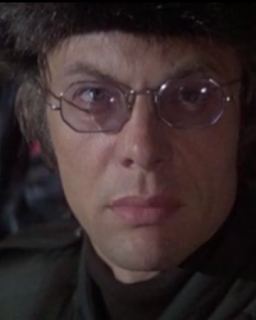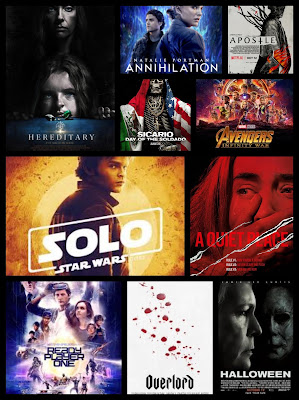For Your Eyes Only
The intention of the filmmakers to distinguish Moonraker from its sequel, For Your Eyes Only (FYEO), would on paper appear to be an attempt to mimic Bond's final act in the Moonraker film - that of sci-fi spectacle, crashing down to reality. And whilst FYEO does grapple with fairly low-key affairs, for a Bond film at least, it doesn't quite give up the garish trappings of the past, leaving it uncomfortably straddling the two.
In FYEO, the premise evokes classic Bond, particularly From Russia With Love, with Britain and the Soviets vying to take control of the lost British ATAC system, that allows the British government to communicate with its various missile subs. To do so, Bond has to entangle himself in the Greek underworld, aided by an avenging angel with a personal grudge to fulfil.
Sounds real world enough, right? Well, weirdly the pre-credit sequence does little by the way of acting as a mission statement. Starting with Bond visiting the grave of his dead wife, Tracy (thus doing away with the various theories that 007 and the name James Bond are both cover names, and a way of explaining how James Bond has appeared as various actors over various years - either that or the cover story is so good that each Bond has to carry on with the baggage of the previous holder of the title). This sombre scene is quickly jetisoned by a bald, cat stroking figure electronically taking over Bond's helicopter and taking him on a dicey death trip.
Naturally, this bald figure is never referred to as Blofeld but the comparison is undeniable. It would appear that the makers of the film were still stinging over losing the rights to him to McClory, and thought that best way to enshrine that animosity was to unceremoniously have Bond pick up the bald bad guy with the helicopter, and drop him down an industrial chimney, whilst Blofeld pleads with Bond to let him go in exchange for a "delicatessen...in stainless steel!" Such a ploy does not work, and not-Blofeld is dead. Whilst the opening has some impressive helicopter stunt work, it seems so odd to have the film lower itself to simply highlight a feud outside the film.
Nonsensical elements past the intro are few on the ground, but we can't move too much further on without talking about the very literal "Bond girl" - Bibi. Introduced as a figure skating prodigy, she locks eyes on the ageing 007 and says yep, he's my man. She sneaks into his hotel room, and slips into bed, wearing very little. And Bond suddenly finds his line in terms of an age gap, more or less pushing off her advances (but allowing one kiss), and instead insisting that he buys her an ice cream. Again, an odd scene in an otherwise fairly straight laced movie. Oh and there's also a ridiculous bit at the end when they get a quite good Margaret Thatcher impersonator to thank Bond, only for to turn out who she is speaking to is a parrot impersonating Bond.
These lighthearted scenes runs completely opposite a film which depicts a fairly harrowing shipwreck, and the gunning down of parents of the female lead of the film, Melina Havelock. Played by Carol Bouquet, Melina is one of the better female leads of the series, acting mostly independent from Bond for a significant portion of the film, and never once in need of rescuing. Whilst her motivation does not evolve to anything more than simply revenge, it is refreshing to have someone truly as competent as Bond, who also moves the plot forward on her own.
The one time that she is in need of rescuing is also the time that Bond needs it to, when the pair are tied to a rope and dragged behind a ship in Greek shark infested waters. Here the pair work together in a fairly gruelling death trap devised by the villain, which was actually lifted from the pages of Live and Let Die and placed here, rather than that movie (a move which would be repeated for the film Licence to Kill and a different scene).
Unfortunately, this death trap marks the only time that the film's villain really gets a chance to shine as a Bond villain. Perhaps a casualty of the more grounded tone, Aristotle Kristatos, (played by Julian Glover - who has the honour of playing bad guys in Bond, Star Wars, and Indiana Jones), is a far less colourful foe for Bond. Here he simply wants to obtain the ATAC for the Soviets. His role as a villain is also kept from audiences and Bond for a significant portion of the film, with Kristatos instead introducing him as an ally and pointing the blame at Greek smuggler, Columbo, charmingly played by Chaim Topol.

Kristatos does employ a henchman that did give me the creeps as a kid - the silent Emilio Locque. Locque serves as the antagonist for the first half of the film, and proceeds to cut a bloody swathe through Bond's allies, most chillingly smirking as he runs down a Countess with a jeep (the Countess being played by Cassandra Harris who was engaged to future Bond Pierce Brosnan). When Bond finally catches up with Locque, we probably get one of Moore's strongest scenes in the series, standing ground as Locque approaches in a car, Bond manages to shoot in him in the shoulder. The car hurtles to the precipice of a mountain road, Bond coldly approaches and kicks the car over the edge, as Locque fails in a scramble to safety.
Elsewhere, the action also focuses much more on tension then spectacle, with the finale taking place at a monastery on an isolated mountain, that Bond has to mountaineer up. Here, further wonderful stunt work pushes the stakes forward, as Bond has to speedily ascend against a henchman descending and knocking out his various mountain pitons.
The film was commercially successful, becoming the second highest grossing film in the series, only behind its predecessor. Critical reception was however mixed, with criticism ranging from the grounded nature of the film being half-hearted, to others missing the excess of the past. Contemporary views have been somewhat kinder to the film, and one can see this, together with From Russia With Love, and Timothy Dalton's films in particular as templates that Daniel Craig's tenure would go on to attempt to refine. It is often said that FYEO is the forgotten Moore film, with a tone outside the norm for his tenure, but even the first Kingsman film's advertising paid homage to it, with a poster that directly mimicked and parodied the sexualised poster for FYEO.
Perhaps it was the mix of critical reception over commercial success, but for whatever reason, this slightly harder edged version of Bond (at least for a Roger Moore film), was short lived, as the next film in the series is one that I recall having only dared watch once, and I am not looking forward to its titular tentacular torture.








Comments
Post a Comment